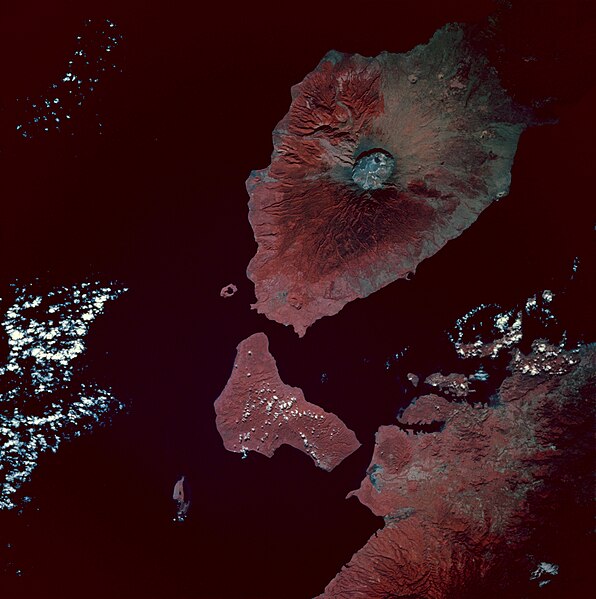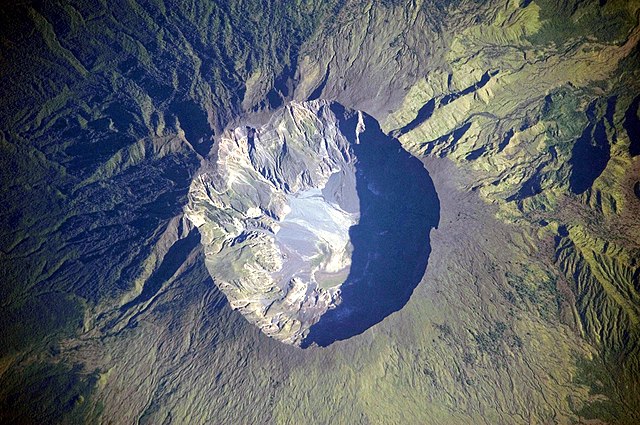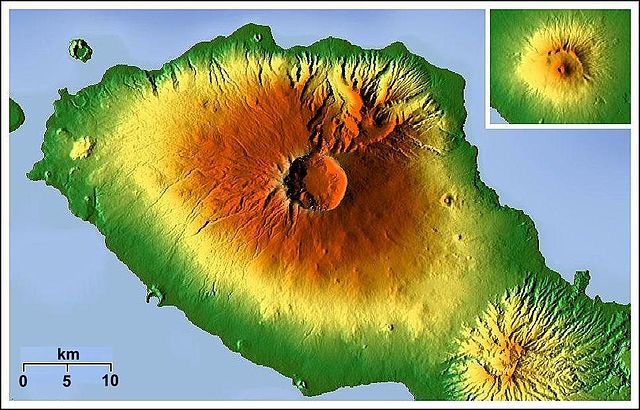1815 eruption of Mount Tambora
Mount Tambora is a volcano on the island of Sumbawa in present-day Indonesia, then part of the Dutch East Indies, and its 1815 eruption was the most powerful volcanic eruption in recorded human history. This volcanic explosivity index (VEI) 7 eruption ejected 37–45 km3 of dense-rock equivalent (DRE) material into the atmosphere, and was the most recent confirmed VEI-7 eruption.
False color image of Mount Tambora, taken from the Space Shuttle Endeavour on May 13, 1992; east at top
The yellow skies typical of summer 1815 had a profound impact on the paintings of J. M. W. Turner
Mount Tambora, or Tomboro, is an active stratovolcano in West Nusa Tenggara, Indonesia. Located on Sumbawa in the Lesser Sunda Islands, it was formed by the active subduction zones beneath it. Before 1815, its elevation reached more than 4,300 metres high, making it one of the tallest peaks in the Indonesian archipelago.
Caldera of Mount Tambora
Mount Tambora and its surroundings as seen from space
View of Mount Rinjani from Mount Tambora. Viewing distance is 165 kilometres (103 mi).
Size comparison of Mount Tambora ("Pompeii of the East") and Mount Vesuvius ("Pompeii")






